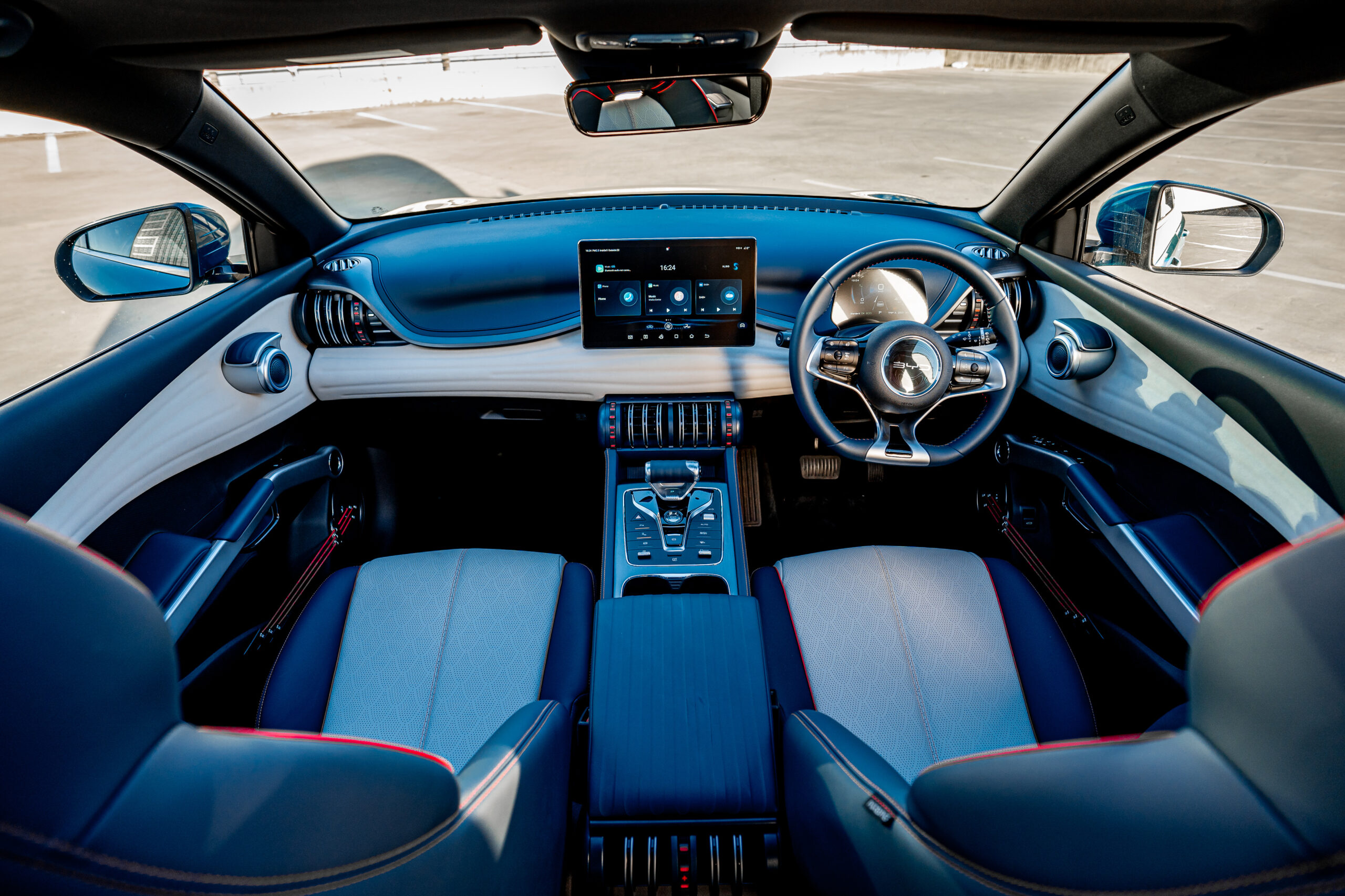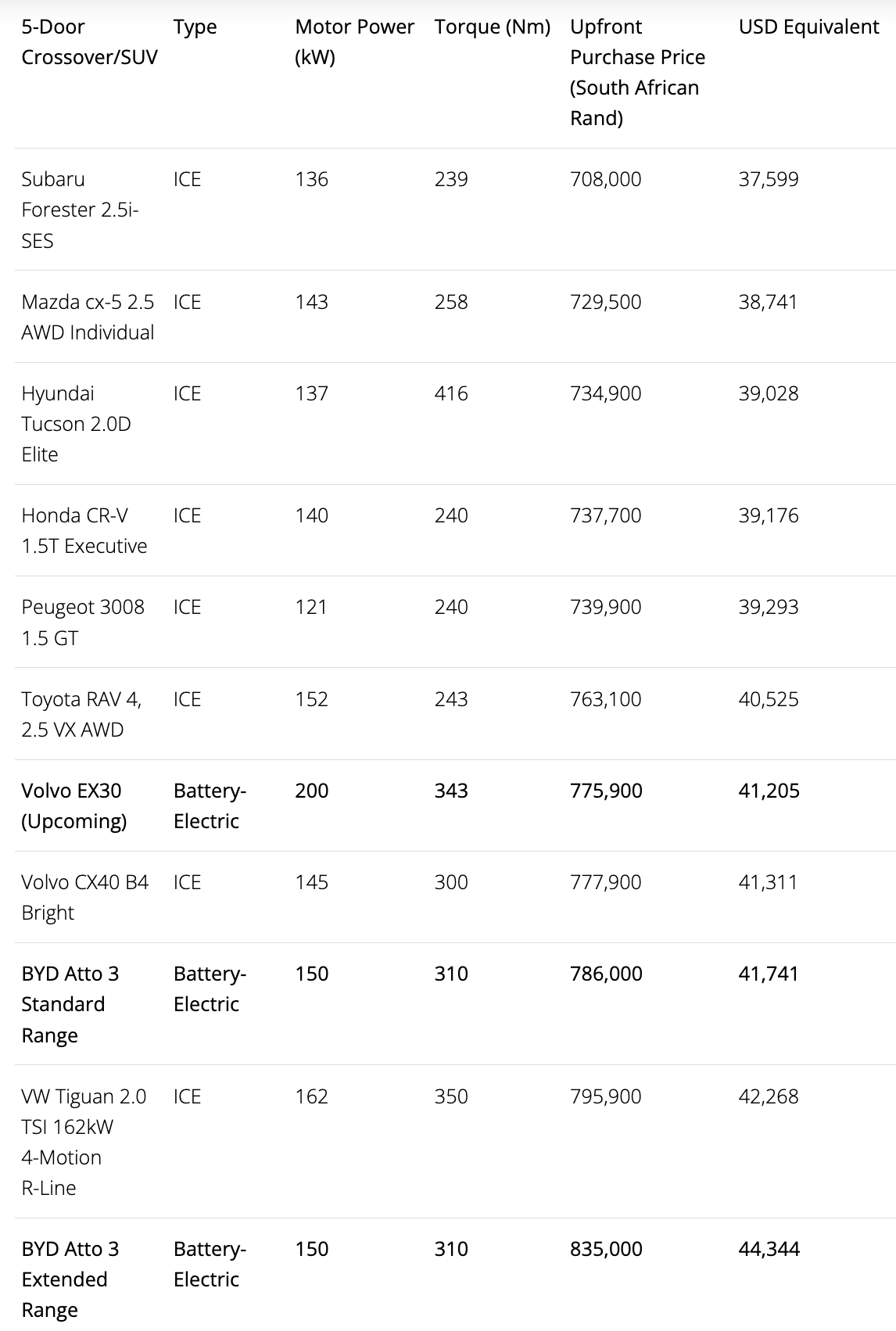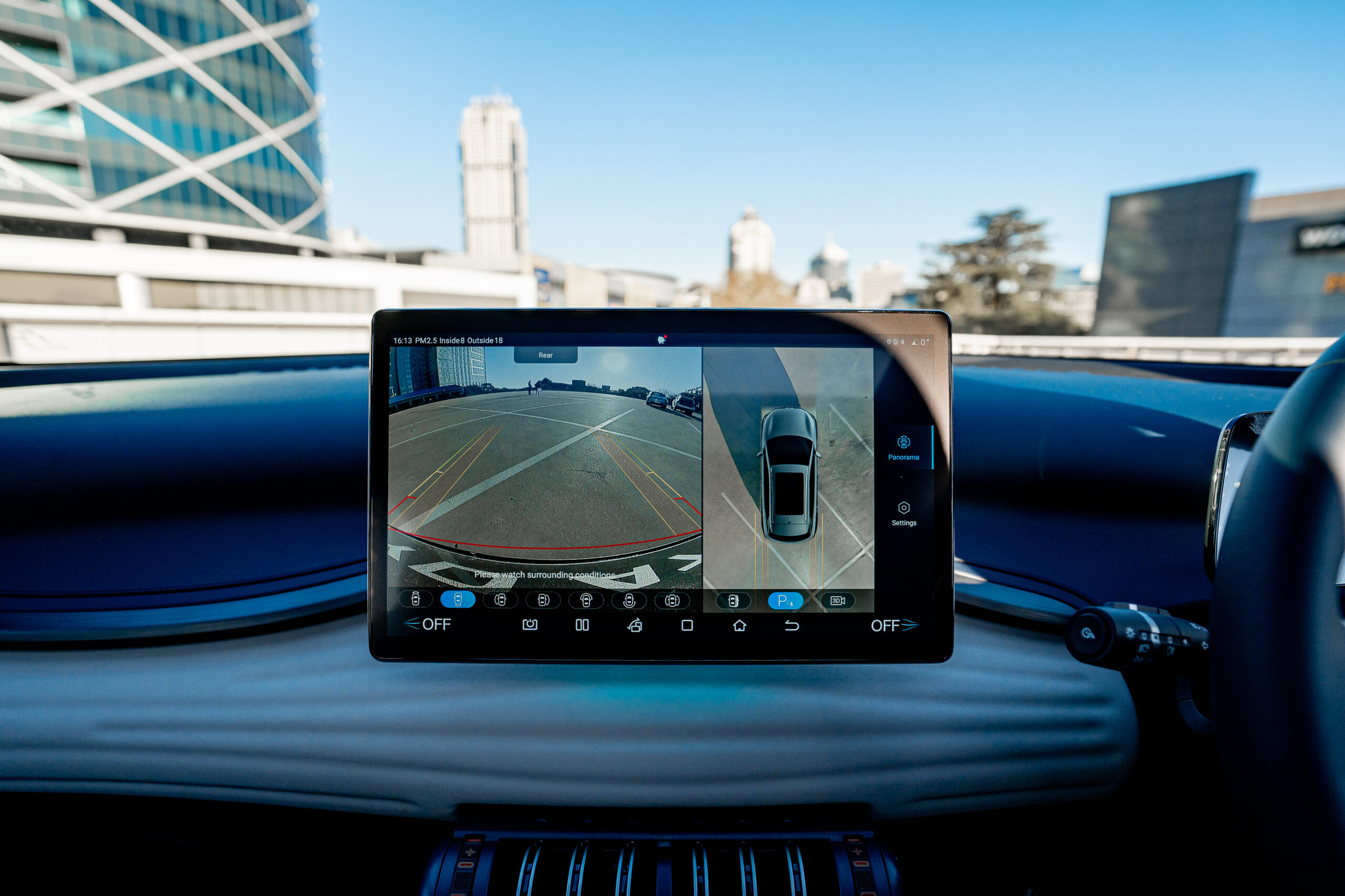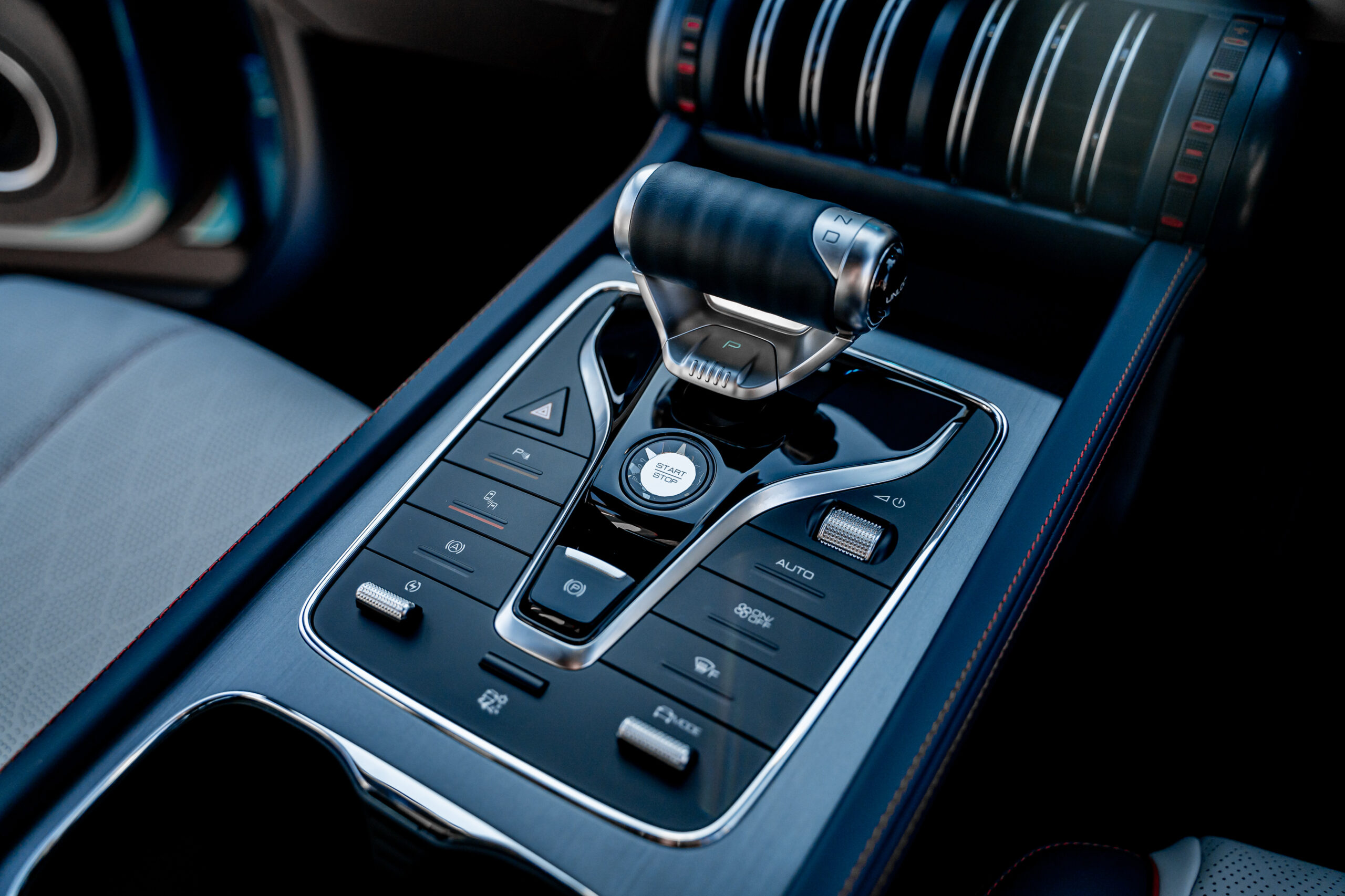
The BYD Atto 3 is now available in South Africa. It was launched last Friday in Johannesburg. The Atto 3 will have 2 models in South Africa, a 49.92kWh Standard Range model starting from R768,000, and a 60.48kWh Extended Range model. Both models have BYD’s Blade Battery. The Extended Range Version starting from R835,000.
Both models have a 150kW/310Nm permanent magnet synchronous motor, front-wheel drive, and acceleration of 0-100km/h in 7.3 seconds. The Standard Range has a 345 km WLTP range, and the Extended Range version has a 420km WLTP range. AC charging is up to 7kW with a Type 2 connector, and DC charging is up to 70kW/80kW (CCS2), respectively.
The Atto 3 is a C-class SUV constructed on BYD’s e-Platform 3.0. Let’s have a look at 9 similar 5-seater SUVs that are priced between R700,000 and R800,000 to see where the ATTO 3 slots in.
The list is not exhaustive, and I have selected a few of the popular 5-seater small- to medium-sized SUVs that are available in South Africa right now, with the exception of the all new Volvo EX30 which will be available from early next year (however, one can already place an order in South Africa now).
The list illustrates some significant progress for the South African EV space, as recently as just two months ago, there was not a single battery-electric SUV/crossover in the R700,000 to R800,000 price range, and now we have 2 options, the Standard Range Atto 3, and the Volvo EX30. The Extended Range Atto 3 falls outside this range, landing at R835,000, but before last month there was not a single EV crossover/SUV in his price range. Most of the EVs available in South Africa before then were the larger and more premium SUVs starting from over R1.2 million, with quite a few of them going for over R1.7 million rand and into the upper R2 million price bracket.
From the table above, it is clear to see that the BYD Atto 3 and the Volvo EX30 are priced competitively to similar ICE models. The upfront price difference between some of these popular ICE models and the BEVs is less than $2,000, and given the lower maintenance and fueling costs associated with BEVs, this may swing a lot more people looking to buy a vehicle in this segment to opt for the Atto 3 and the Volvo EX30 than to buy an ICE vehicle. And this in a market without any incentives for BEVs! Imagine if some incentives were introduced.
Interest in electric cars is growing in South Africa. A survey included in last year’s Auto Trader South Africa’s Buyers Survey report showed that over 70% of South Africans would be interested in switching to electric if they had the option to buy an electric vehicle that costs less than R500,000. Generally, only one EV model can be found priced below R500,000, which is a used 7-year-old Nissan Leaf for about R380,000. The first generation Nissan Leaf was discontinued in South Africa a few years ago, and the second generation Leaf was not sold in South Africa. The most listed electric vehicle is the BMW i3, for around R660,000. The high import duties and taxes levied on EV imports do not help, and hopefully the South African government will address this sooner rather than later. There is some progress at least with the arrival of the BYD Atto 3, but its pricing would also be so much better if the duties and taxes were reduced. I’m looking forward to seeing which models will follow after the Atto 3 in the near future.

Images courtesy of BYD South Africa.
I don’t like paywalls. You don’t like paywalls. Who likes paywalls? Here at CleanTechnica, we implemented a limited paywall for a while, but it always felt wrong — and it was always tough to decide what we should put behind there. In theory, your most exclusive and best content goes behind a paywall. But then fewer people read it! We just don’t like paywalls, and so we’ve decided to ditch ours. Unfortunately, the media business is still a tough, cut-throat business with tiny margins. It’s a never-ending Olympic challenge to stay above water or even perhaps — gasp — grow. So …








